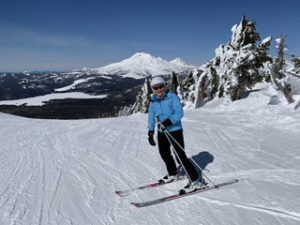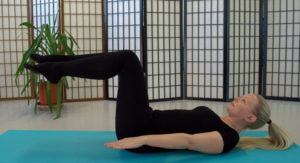
It’s that time of year when we can either wish for some warmer weather – or just embrace whatever weather we have right now. Luckily there are lots of ways to help get ourselves ready for our big rides this summer, no matter what the climate.
In last month’s blog the goal was to work on your mental game, getting prepared for training as well as beginning to build a solid foundation. Now it’s time to get serious about the foundation.
Hopefully you’ve looked at your 2023 calendar and planned some goal events leading up to your BRNW ride in June or July, to help you get ready. If not, now is the time to plan these “target” events.
The two main things we need to continue working on this month are overall strength and cardiovascular fitness (base training).

Photo by Picasa
For your strength training, the most important things to work on are your core, your legs and your upper-body strength and stability. The core is the foundation of all other parts of your body. Without a solid core, you’re more prone to injuries – not to mention the fact that you’ll suffer on long rides. Be sure to spend at least two days a week working on your core; three is even better. You can do Pilates, yoga or a simple core routine.
For lower-body work, you want to strengthen the following muscle groups: lower back, glutes, quads, hip flexors, hamstrings and calves. Good exercises include some form of squat, leg press machine or step-ups with or without dumbbells, deadlifts (focus on good form and technique), hamstring curls of some sort (with a stability ball or machines) and calf raises. If you can’t fit in all of these, pick a few to focus on; squats, step-ups and calf raises go a long way.
For the upper body, you want to focus on the upper back and chest, biceps and triceps – all of which help stabilize you on the bike. Exercises include bench press, some form of rowing, biceps curls and triceps push-downs. (And remember that the push-up is the single most useful combo of upper body and core, and it doesn’t need any equipment.) The goal is not to get bulky, but rather to build a solid foundation while riding your bike.
You should always start with a light weight and work on form first before you increase the weights and/or reps. Consult with a personal trainer or coach to set you up with a periodized strength plan – it will make all the difference when it comes time for your long rides.
The other aspect of training this month is working on your base/cardiovascular fitness. And remember: The old adage that says you have to go slow to get fast is very true. The more time you can spend in your endurance or “aerobic” zone (heart rate 55% to 75% of max) the better off you’ll be in the long haul. By doing the lower-intensity endurance training you set your body up to tolerate harder efforts later and to use lactate for fuel, which is a key to tolerating long endurance activities. So if you can try to get in at least one day a week of the longer easier efforts, you’ll see benefits down the road. Here’s a great article about the importance of this type of training.

photo by Felix Wong
As a baseline for this time of year, try doing some form of cardio activity (indoor bike or other aerobic activity like Nordic skiing, fat biking, hiking or swimming) 2-3 days a week and some full-body strength and/or core work 2 days a week. Try to get on your bike at least 1 day a week if you can, to get your body used to the motion of riding. And don’t increase your time and/or distance of any activity more than 10%-15% a week, as that can lead to injury and overtraining.
Remember, too: If you’re riding outside, wear layers, be sure to remember to eat and drink (you need more calories in cold than warm; if you’re skiing or riding outside in the cold you may not feel like drinking, but you actually need more fluids than you think). And be sure to use lights both during the day and at night. Also, be sure to have visible colors on.
Research shows that having your moving parts (feet/legs) clad in high-visibility colors is the most effective way to have cars see you.
This was adapted from a previous blog post by retired physician and professional performance trainer Anne Linton, who lives in Bend. If you’re interested in more in-depth coaching or training guidelines, feel free to email anne@lintonhornercoaching.com or go to her website at Linton Horner Coaching.
This was adapted from a previous blog post by retired physician and professional performance trainer Anne Linton, who lives in Bend. If you’re interested in more in-depth coaching or training guidelines, feel free to email or go to her website at Linton Horner Coaching.